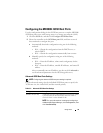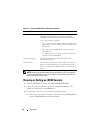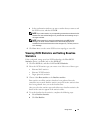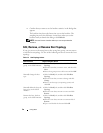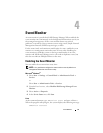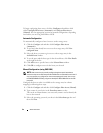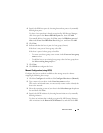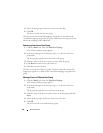
About Your Host 43
About Your Host
This chapter covers basic information about configuring host groups and host
access, host topology, and I/O data path protection.
A host is a system that accesses a storage array and is mapped to the virtual
disks through one or more host connections. Hosts have the following
attributes:
• Host name — A name that uniquely identifies the host.
• Host type — The operating system running on the host.
• Host connection — A physical connection to the host server. Host
connections can be automatically detected by MD Storage Manager and
can be identified by an alias assigned by the user.
• Host group — A host may be associated with other hosts to share access to
the same virtual disks.
Configuring Host Access
Configuring host access allows you to either permit or deny access to a storage
array for specific hosts. When you permit host access, that host can then be
mapped to a virtual disk on the storage array. On the Summary tab, the Hosts
& Mappings area indicates how many hosts are configured to access the array.
Click Configured Hosts in this area to see the names of these hosts.
Host access configuration is the first step in setting up your storage array. You
must complete this task during initial setup and anytime you connect a new
host.
After you configure host access, the host does not yet have the ability to write
data to the storage array. You must map hosts to the virtual disks and register
virtual disks with the host’s operating system before a host can write to the
storage array. See “Disk Groups and Virtual Disks” on page 53 for information
on these tasks.



